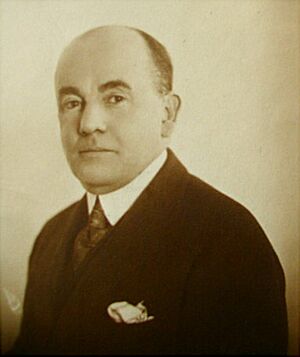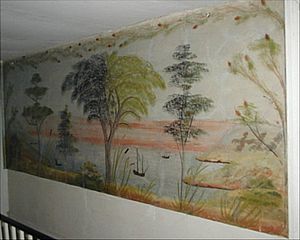Cambridge Grant Historic District facts for kids
Quick facts for kids |
|
|
Cambridge Grant Historic District
|
|

John Adams, Jr. House in 2010
|
|
| Location | Ashburnham, Massachusetts |
|---|---|
| Built | 1766 |
| Architectural style | Federal |
| NRHP reference No. | 01000626 |
| Added to NRHP | August 20, 2001 |
The Cambridge Grant Historic District is a special historical area. It covers about 322 acres (1.3 km²) in Ashburnham, Massachusetts. You can find it on Russell Hill Road and Wilker Road. This district sits high up, between 1240 and 1300 feet (378–396 meters) above sea level. It was officially added to the National Register of Historic Places in 2001.
Contents
History of Cambridge Grant
How the Land Was Granted
This land, which is about 1000 acres (4 km²), was given to the town of Cambridge in 1734. It was a payment for Cambridge's job of taking care of the first bridge over the Charles River. This bridge, built in 1662, connected Boston to towns further north. The land was known as the Cambridge Bridge Farm.
First Settlers Arrive
The area stayed unsettled until 1770. That's when John Adams from Menotomy (now West Cambridge Parish) became the first person to settle there with his new wife, Joanna Munroe. Soon, other family members followed him. These included his father, Thomas Adams, Sr., his brother, Thomas Adams, Jr., and his sister, Lucretia Adams Wetherbee. His nephew, Thomas Russell, also moved there. A community of related families, mainly the Adams and Russell families from Menotomy, grew in the area. Many early settlers worked by tanning goat or sheep skins to make a special type of leather called Morocco leather. This Adams family was not related to the famous Presidential Adams family from Braintree.
Role in the American Revolution
The Adams and Russell families had strong connections to important figures in the American Revolution. Joanna Munroe, who was the wife of the first settler John Adams, had a brother named Ebenezer Munroe. He was a Minuteman and might have fired the first shot at the British soldiers on Lexington green on April 19, 1775. Her other brother, Isaac Munroe, was killed by the British that same day. Ebenezer Munroe later moved to Ashburnham.
Early settler Thomas Russell, who was John Adams's nephew, was a second cousin to Jason Russell. Jason Russell owned the Jason Russell House and was killed by British soldiers returning to Boston after the Battles of Lexington and Concord.
Shortly after the Battles of Lexington and Concord, Ethan Wetherbee and his wife, Lucretia Adams, joined the first settlers. Lucretia was a sister of John Adams. Ethan Wetherbee used to run the Black Horse Tavern in Menotomy. Important groups like the Massachusetts Committee of Safety and the Committee of Supplies met there. On the night of April 18–19, 1775, Wetherbee locked the tavern door. This action saved important leaders like Charles Lee, Azor Orne, and Elbridge Gerry from being captured by British troops. The British were passing through on their way to Concord.
Cambridge Grant in the 1900s
In the early 1900s, the Cambridge Grant area became a lively summer spot for artists. Many writers and artists lived there. It was known for fun outdoor plays organized by the successful stage actor, Aldrich Bowker (1875–1947). He was one of the summer residents. Bowker took over the role of Grandpa in the Broadway play You Can't Take It with You. He performed in over 500 shows in New York and Chicago. When the play won the Pulitzer Prize in 1937, Bowker was the one who presented the award. He also played many different characters in 25 movies between 1939 and 1942. Some of his movies include The Major and the Minor and Abe Lincoln in Illinois.
Aldrich Bowker's brother, Frank Bowker, also lived in the district. Frank wrote a play called Ashby Four Corners, which was about life in a small New England town like Russell Hill. Clara Burbank (1862–1927), a talented artist known for still life paintings, was a neighbor. Amy L. Burbank (1875–1948), a popular New England landscape painter, also lived nearby.
Why Cambridge Grant is Important
In the 1700s, it was common for land grants in Massachusetts and Maine to have small neighborhoods with one or two families. However, most of these old settlements are now gone or changed due to new buildings. The Cambridge Grant is special because it still has many of its original early homes and farm buildings. There has been almost no new construction that would change its historic look.
Today, the Cambridge Grant Historic District has seven homes built in the Federal Architecture style. These homes date from 1787/88 to 1834. The district also includes old barns and other outbuildings. There is also the Russell-Burbank family cemetery, which started in 1848. Inside the Walter Russell House, you can even see two of the earliest known murals. These murals were painted by a traveling artist from the Rufus Porter style.





